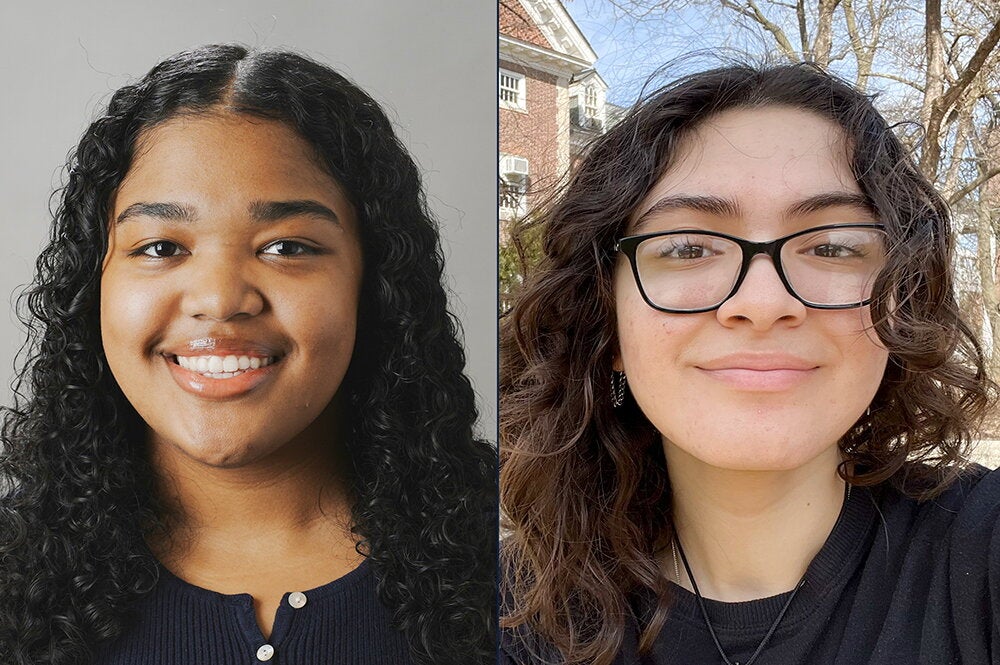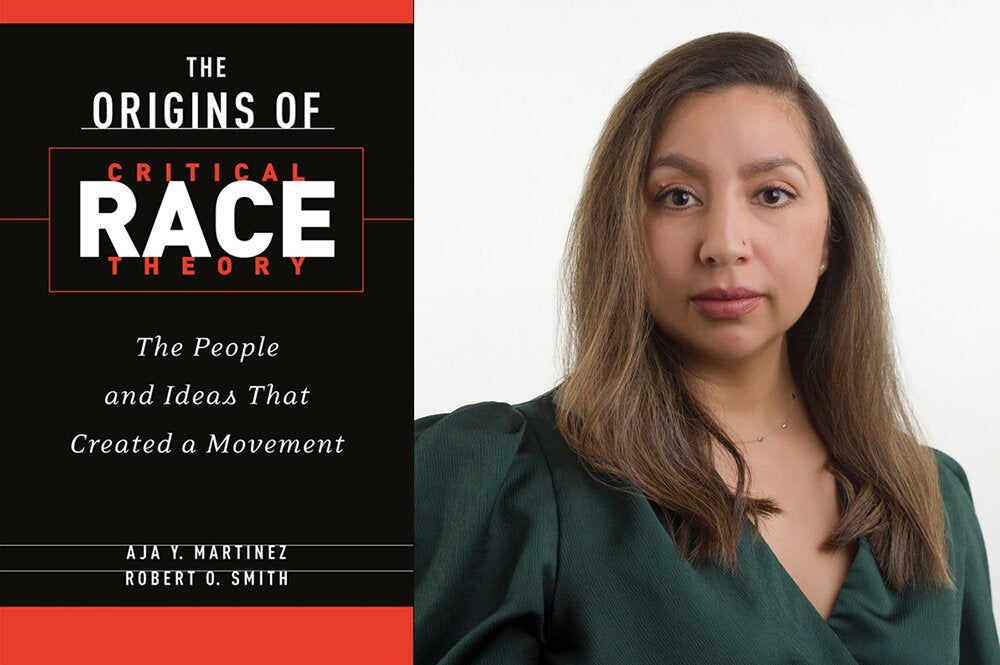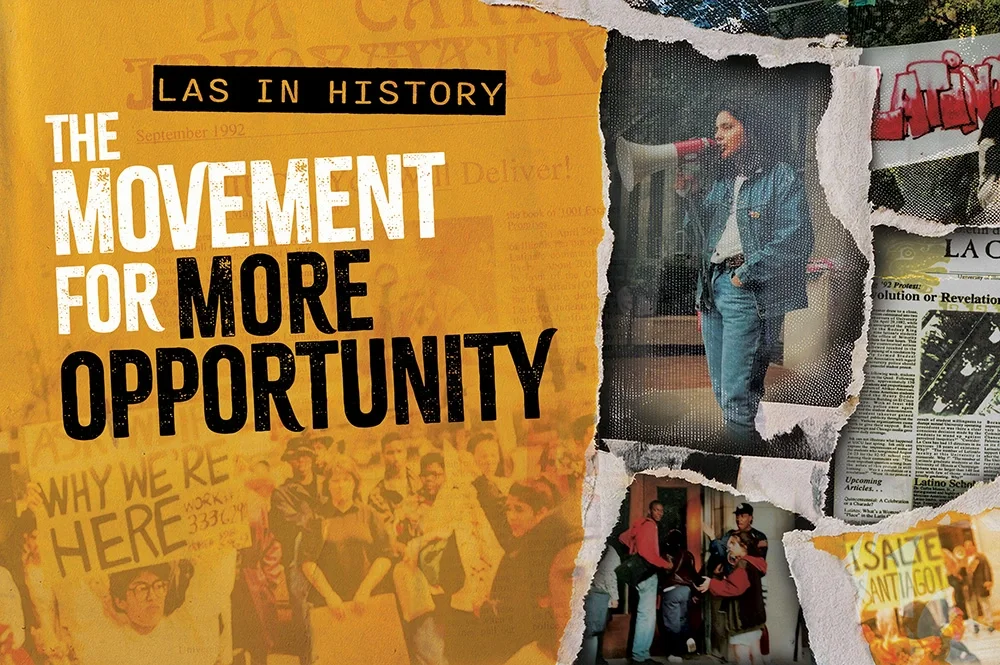
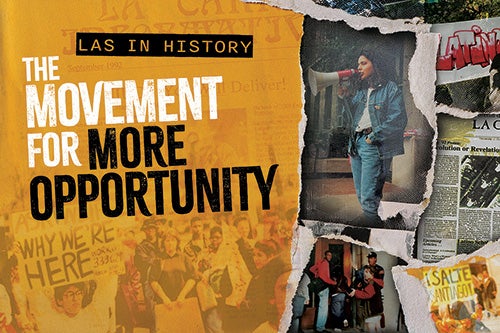
On May 5, 1992, a diverse coalition of more than 450 people, mostly students, gathered in and around the U of I’s Henry Administration Building with the goal of increasing institutional support for Latina/o students and programs on campus.
The students called for the creation of a Latina/Latino studies program, hiring additional Latina/o faculty, staff, and administrators, increasing funding and support for the cultural center La Casa Cultural Latina, and increasing recruitment and retention efforts for Latina/o students. They also called for the elimination of Chief Illiniwek and for the university to also support Indigenous students, many of whom also have Latina/o heritage.
After a peaceful sit-in that lasted several hours, students were ordered to leave the Henry Administration Building. Media reports and a student documentary video detail how students were forcibly removed by police in riot gear after they refused to vacate the building.
In response to the student’s demands, the chancellor created a committee of faculty members to investigate the university’s support for the Latina/o community. After the protest, the Illinois General Assembly passed a resolution requiring an investigation into the problems concerning Latina/o students at the U of I. In June, the university announced plans to develop a Latina/Latino studies program, to find a better location for La Casa Cultural Latina, and to begin recruiting additional Latina/o administrators, faculty members, and students.
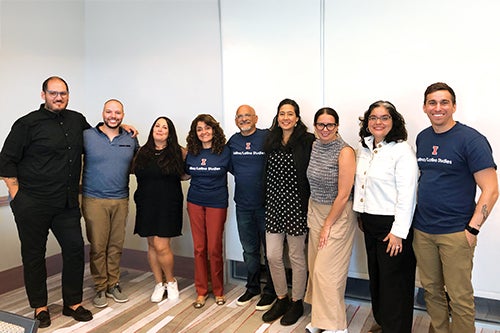
This wasn’t the first time activists had called for Latina/o programs and resources. In the 1970s, campus activism led to the founding of La Casa Cultural Latina, which advocates and provides opportunities for Latina/o students. La Casa Cultural Latina was a key hub for the student organizers of the 1992 protests.
By 1995, the university had begun to recruit more Latina/o faculty, and La Casa Cultural Latina was moved to Nevada Street, where it remains today.
Alicia P. Rodriguez (MA, ‘91; PhD, ‘96; educational policy studies), who was active in the 1992 movement, was hired back then as a graduate student research assistant by anthropology and Latin American and Caribbean studies professor Enrique Mayer to explore the possibilities for a Latina/o studies program at Illinois. Programs existed in California and the Southwest that were focused on Mexican-American/Chicano studies, but organizers wanted the program to reflect the diverse Latina/o populations in the Midwest.
“We were really cognizant of that and trying to realize that whatever the program would be like here is not necessarily going to be the same as you would see elsewhere in the country,” Rodriguez said.
Those efforts, along with continued student pressure, led to the creation of the Latina/Latino Studies Program in 1996, along with an undergraduate interdisciplinary minor in Latina/Latino studies. Professor Rolando J. Romero was appointed as the first director, and in 2002 the program hired its first tenure-track faculty. In 2003, Rodriguez became associate director.
In 2007, Isabel Molina-Guzmán (currently the LAS associate dean of student academic affairs), became interim director while program director Arlene Torres was on sabbatical. She and Rodriguez led the department through the processes to become a department, building on the groundwork laid by Torres.
By 2010 the program, with university-wide support, became the first Latina/Latino studies department in the country. This achievement gave it the ability to hire more faculty members, grant tenure, and offer a graduate minor and undergraduate major. Molina-Guzmán became the first chair of the department and Rodriguez, who recently retired after over 20 years of service, became the academic advisor and administrative coordinator.
“Really the impetus for becoming a department came from the student protest of the 90s,” Molina-Guzmán said.
The movement that began in the 1990s fostered a generation of Latina/o studies scholars, including professor Mirelsie Velázquez (BA, ’04, political science; MA, ’07; PhD, ’10; educational policy studies), who joined the department in 2023. She is working on a book that collects oral histories from people involved in the movement.
“The people that were fighting for the institutionalization of the department became leaders in the field because of the work they started as undergrads here. I have a list of 10 of us that are now Latina/Latino/Latinx faculty across the country,” said Velázquez. “There’s a really big genealogy that is accredited to this space… specifically this department.”
Today the Department of Latina/Latino Studies is recognized as one of the nation’s best, exploring the Latina/o experience from a sociological, historical, and cultural perspective. The department has nine award-winning faculty members and 15 affiliates who are consistently ranked as outstanding teachers by their students.
Its history is not forgotten. Students learn about the history of the department in LLS 100: Intro to Latina/Latino studies and LLS 238: Latina/o Social Movements. When Velázquez teaches LLS 238, she gives students a copy of the 1992 list of demands and asks them to create their own. Concerns about recruitment, retention, institutional support, and a lack of Latina/o faculty in other units remain high on the list.
“It’s the exact same list of demands or at least concerns that they have about their time here. My hope is that at some point, we don’t just listen but we react to what they’re saying,” she said.
Learn more about a proposed building for ethnic, gender, and women’s studies that will benefit the Department of Latina/Latino Studies and several other academic units here.
Editor's note: This story first appeared in the Spring 2025 issue of The Quadrangle. Read an extended version of this story here.

